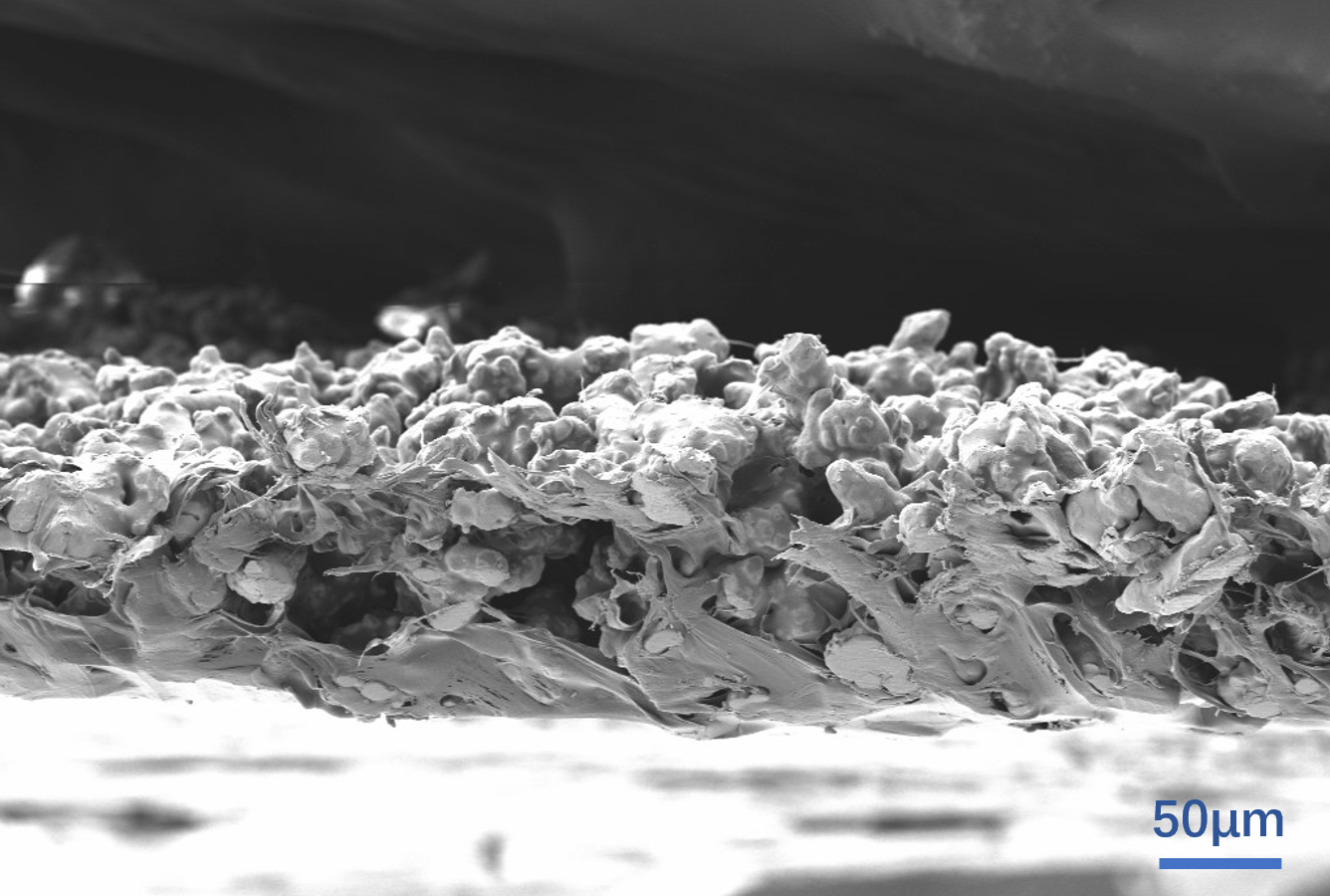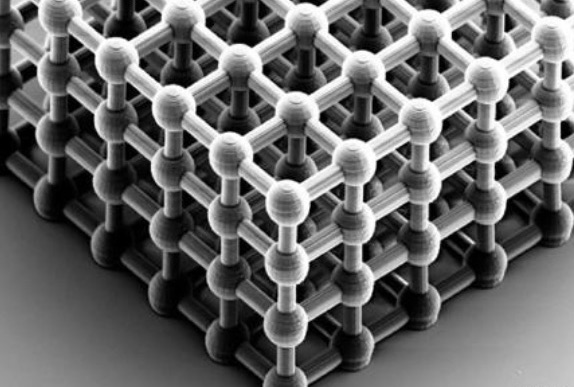STAM-Science and Technology in Advanced Manufacturing
Parsons Building, Trinity College Dublin, Ireland
Dr. Rocco Lupoi
Research Staff
William Abbott
Wenyou Zhang
Asli Coban
Moyin Otubela
Funding bodies:
EIT Raw Materials
Consortium:
TCD(Coordinator), 3CPT, Gemmate Technologies, Stellantis (CRF), PrimaAdditive, LTU, Polimi, Ferritico
Description:
Additive manufacturing (AM) is experiencing increasingly wider adoption by automotive, aerospace, and medical industries because it unlocks new design freedoms. Metal AM methods typically use powder or wire as feedstock. Powder can either be pre-placed (with the common benchmark of Powder Bed Fusion, PBF) or blown towards the processing zone (Directed Energy Deposition, DED). Loose powder, however, shows several disadvantages:
- Long clean-up times and labour intensive between prints
- It is uneconomic and impractical to switch powder materials, thus not suitable for printing of functionally graded multi-material components
- High Health & Safety requirements caused by storage of loose powders and human contact
- High material consumption due to high amount of powder needs for supportive structure
- High adoption cost of AM system
PosAddive will develop and then upscale a novel disruptive metal AM technology using flexible metal powder sheets, on which the powder material is attached with a newly developed binder technology to be locally transferred by a laser beam to form a new structure layer-by-layer, overcoming the problem of having loose powder in production. The unique features are the flexible variation of multi-material print by shifting the powder sheets, no machine contaminations, reduced health risks for humans, no restrictions on powder flowability and minimizing waste powder production due to easy powder sheet recycling. Those cost and technical advantages are expected to lead to a rapid acceptance by industry.

Dr. Rocco Lupoi
Dr. Shuo Yin
Research Staff
Pengfei Yu
Funding bodies:
European innovation Council (EIC)
Description:
Additive Manufacturing (AM) is widely regarded as the future of industrial production due to its exceptional design freedom. However, current AM technologies like Laser Powder Bed Fusion (LPBF) face significant limitations, including high energy consumption, slow build rates, limited material selection, and poor surface quality. To unlock the full potential of AM, we need a groundbreaking shift.
MadeCold is set to redefine the landscape of additive manufacturing. By merging solid-state physics,electrostatic principles, advanced control systems, and innovative mechanical design, MadeCold introduces a revolutionary solid-state deposition process. Our novel approach charges and propels metal powders to supersonic velocities within a customized electric field, utilizing their kinetic energy to create strong bonds upon impact with a substrate—something never achieved before.
We envision MadeCold transforming key industries, including aerospace, energy, and hybrid manufacturing, by enabling the creation of multi-material structures with unprecedented properties. Through a multi-disciplinary approach and groundbreaking discoveries, we are paving the way for Europe to lead the next generation of advanced manufacturing.
Webpage:http://www.madecold.eu/
Dr. Rocco Lupoi
Dr. Shuo Yin
Dr. Anthony Robinson
Research Staff
Yan Chen
Funding bodies:
TCD/CSC partnership
Description:
Cold spray machining is attracting attention for its unique process advantages. First of all, its ability to achieve rapid prototyping with low manufacturing costs makes it very attractive for industrial applications. In addition, the ability to precisely control the morphology of the prepared coating provides important support for optimizing material properties. On the other hand, boiling heat transfer, as an efficient and simple heat transfer method, has been widely used in many fields due to its high heat transfer efficiency and low energy consumption. However, how to further improve the performance of boiling heat transfer is still one of the hot spots in current research. The use of cold spraying technology for the preparation of porous surfaces with enhanced boiling heat transfer performance not only improves the heat exchange efficiency, but also effectively expands the application fields of cold spraying technology. This combination realizes the organic integration of advanced processing technology and heat transfer engineering, and provides new ideas for the design and optimization of related industrial equipment, which has important research value and application prospects.
Dr. Rocco Lupoi
Research Staff
Laia Villar
Funding bodies:
European Union’s Horizon Europe research and innovation programme under the Marie Skłodowska-Curie grant
Description:
The Re-Make project, coordinated by Politecnico di Milano, aims to implement, monitor, and characterize a bespoke sustainable high-performance repair and Additive Manufacturing (AM) technology based on solid state deposition. The project seeks to achieve functional products through a multi-faceted approach that combines multi-scale computational modelling with advanced experimental, analytical techniques, and data-driven approaches. Extensive background research has led to the definition 11 Doctoral candidates that will accomplish Re-Make’s plan through a list of realistically measurable and verifiable Research and Training Objectives.
Here at Trinity College, we developed the DC2 program, for the development of a new experimental set-up for impact high-speed visualizations with a high-speed camera. The findings of DC2 will provide with a deeper understanding of the impact process and the key particle/substrate interactions for a wide range of materials, and will allow to resolve in real-time the plastic and elastic deformation process during Cold Spray (CS).
Dr. Rocco Lupoi
Prof. James Lunney
Research Staff
Weiming Su
Funding bodies:
TCD/CSC partnership
Description:
Aerosol jet printing is a promising additive manufacturing technique for flexible electronics. In the wet aerosol method, a metal nanoparticle ink is aerosolised and transported to the print head. Dry aerosol jet printing, where a metal aerosol is prepared in the printing device, may offer some advantages by avoiding the need to prepare and store the nanoparticle ink, and improving the surface purity of the printed nanoparticles. Here we present description of a novel dry aerosol jet printing method, which is based upon pulsed laser ablation of a metal target in an inert gas at atmospheric pressure. The ablation vapor is condensed near the target to form a mist of nanoparticles, and thence larger nanoparticle agglomerates. The dry aerosol is transported to a print head, and aerodynamically focused into a narrow jet directed on to a moving substrate to form a fine line of weakly-bound silver nanoparticle agglomerates.
Dr. Rocco Lupoi (Engineering)
Dr. Shuo Yin (Engineering)
Dr. Valeria Nicolosi (Chemistry)
Research Staff:
Dr. Apostolos Koutsioukis (Chemistry)
Siyuan Ruan (Engineering)
Funding bodies:
European Innovation Council (EIC)
Description:
Thermal management is in the strong need for new material’s innovation. Stunningly, large data centres spend up to 40% of the total energy consumption to run the cooling system. Other examples are in the cooling of electronics and in the thermal control of electric vehicles batteries.
Here, the development of innovative solutions is hindered by heat removal and transport unsolved problems; the design aspect of thermal control devices has achieved so much but is already under pressure.
In ThermoDust we will achieve a real breakthrough in investigating new flexible materials, with the final aim of engineering a radically new material (ThermoDust) with outstanding heat transfer performance and suitable for Additive Manufacturing.
We are confident to be able to achieve the overall objectives through a sophisticated multi-disciplinary methodology that will rely upon scientific investigations, and the exploitation of discoveries to establish Europe as a leader in heat management, paving the way for innumerable new innovative products and markets in ICT, aerospace, electric vehicles and related areas.
Project Webpage:www.thermodust.eu
Dr. Rocco Lupoi
Project Coordinator:
Dr. Rocco Lupoi, lupoir@tcd.ie
Research Staff:
JanMell Dugenio, dugenioj@tcd.ie
Funding Body:
SFI-EPSRC Center for Doctoral Training in Advanced Characterization of Materials
Description:
High Entropy Alloys (HEAs), comprising of at least five principal metal elements in equal or near equimolar concentrations emerged as a new class of high performance materials due to their unique and excellent mechanical properties such as high strength, fracture toughness, fatigue/corrosion resistance. These alloys hold great potential, and suitability under critical conditions in a variety of industrial applications such as in aerospace, energy and medical devices.
This project explores a novel approach to manufacture HEAs thru additive manufacturing (AM) techniques. The fabrication of materials layer-upon-layer in Additive Manufacturing (AM) offers new ways of making lightweight components with optimized complex structures. However, major challenges remain for the successful realization of AM especially in elucidating the relationship between printability, composition and microstructure of HEAs.
In this project, this relationship will be studied for both Powder Bed Fusion and Solid-State Additive Manufacturing by examining key thermodynamic properties, material characterization and the fabrication process. Moreover, rapid solidification behaviour from these additive manufacturing processes will be studied under microgravity conditions which may influence the formation of solid solutions and may give rise to novel, interesting properties. A comprehensive characterisation of the microstructure and deformation behaviour is carried out using a range of advanced characterisation methods such as, but not limited to, Scanning Electron Microscopy (SEM), energy dispersive x-ray spectroscopy (EDX), and electron back-scattered diffraction (EBSD).
A systematic research of cold spray manufactured novel functional and biocompatible depositions
Dr. Rocco Lupoi
Email: lupoir@tcd.ie
Tel: +353 1 896 1729
Research Staff
Pengfei Yu
Email: yup1@tcd.ie
Funding Bodies
TCD/CSC partnership
Description
Among metallic biomaterials, tantalum is gaining more attention as a new biomaterial. Tantalum has been shown to be corrosion resistant and bioactive in vivo. What’s more, bacterial infection after prostheses implant surgery always lead to failure and suffering of patients. The combination of Ta with other materials can create novel functional coatings with excellent bioactive and antibacterial performance. Cold spray (CS) uses high-temperature compressed gas as propulsive media to accelerate the feedstock particles and a large part of energy needed for formation is the particle kinetic energy. Deposition is achieved through local metallurgical bonding and mechanical interlocking which are caused by localized plastic deformation at the inter-particle and particle-substrate interfaces. cold spray has been developed as an emerging technology for additive manufacture. In addition, the rough surface and inherent defects like porosity can improve the cell attachment and promote bone ingrowth. Considering the features of CS technology, CS and CSAM are promising manufacturing technologies to produce bioactive and antibacterial coatings and components.


